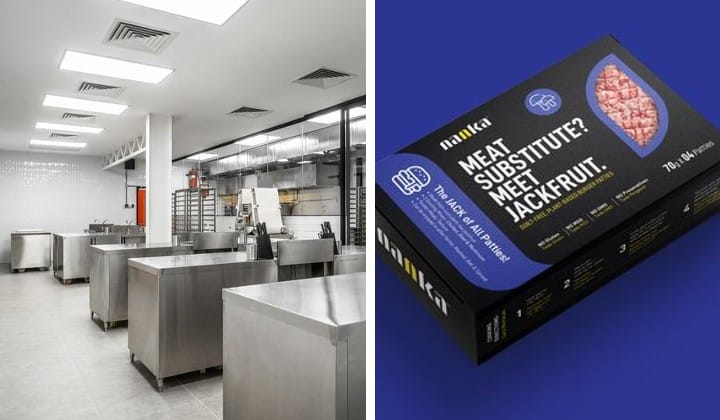4 Food Trends Coming In 2022 That You Should Know About
From robots to non-chicken chicken, what else is there to expect in 2022?

Subscribe to our Telegram channel for the latest stories and updates.
2022. We’re heading to a new year in just a few moments.
2021 has left us Malaysians with various food trends such as digitalized services in restaurants (QR code for ordering and paying), seaweed and mushrooms, cooking everything in an air fryer, viral food videos on TikTok and more.
But what’s in store for us in 2022? As cited by Forbes from a global food and restaurant consultancy, Baum+Whiteman, here are some hottest food trends that are coming next year.
Cooking Robots On The Rise
This concept isn’t new in the dining industry all over the world. Especially during these covid-19 times where social distancing and contactless service is imperative.
Robots and other automated forms of machines in restaurants will be popular in 2022. This could mean robot servers, robots flipping and frying your burgers, unique food vending machines will soon become the norm.

In Malaysia, although we don’t have robots making our meals yet, we do have those serving our meals. As a part of their Covid-19 counter-measure, some restaurants have used robot servers to send food and drinks to their customer’s tables.
That restaurant varies from kayu nasi kandar restaurants in PJ and other outlets to kopitiams in Melaka.

Other than that, we also have our very own Makcik Kiah 19, a Malaysian-made delivery robot that can help frontliners to deliver stuff like food, medicine, etc to Covid-19 patients.
READ MORE: “Makcik Kiah 19” Robot Developed To Help Frontliners Fight Covid-19
Plant-Based Chicken Is Going To Be All Over
Locally and internationally, a lot of people are finding ways to eat healthily. Also, due to the volatility of animal protein prices and also shortages, it’s about time we tried meatless meat products.
READ MORE: More Chicken Drama: Government To Stop Importing Frozen Chicken From February 2022
Hence, that is why some food producers are making plant-based food like zero chicken patties and more.

Globally, a lot of fast-food chains are slowly testing the plant-based diet into their menu such as Burger King, A&W, Panda Express, KFC, and also McDonald’s. Other alternatives like faux fish and cell-based meat are ramping up in their R&D phase.
In Malaysia, we also have a few meat-less meat products from international companies like TiNDLE and OmniMeat, as well as local ones called Chick’n and Nanka.

READ MORE: TiNDLE Plant-Based Chicken – Did The Dishes Taste Good? [Review]
READ MORE: 8 Hotspots For Delicious Plant-Based Meals In Klang Valley (And More)!
They have patties, minced meat, nuggets and many more variations of meatless meat products. Fyi, Nanka offers plant-based meat in the form of jackfruit! Now that’s interesting.
The Emergence Of Ghost Kitchens
Hold, up, what is a Ghost kitchen? No, they’re not the haunted houses you’re imagining right now, they’re basically like a restaurant, but without the dining area, no waiters, no parking spaces, no public presence except for just, a kitchen.
The pandemic has made the F&B businesses adapt to its traditional just dine-in ideas to take away and food delivery services. Ghost/cloud/dark/virtual or shared kitchens are physical spaces for food prep operations and are meant for off-site consumption.

They are only available via food delivery apps and occasionally, take-outs. Most ghost kitchens use third party delivery services.
Their advantages include smaller spaces for rent, lower number of staff required, adjustable menu, smaller investment and shorter launching and breakeven time than traditional restaurants.

Here in Malaysia, ghost kitchens are located in central hubs like KL and PJ. A good example of them would be Cookhouse and GrabKitchen. Ghost kitchens can either be just one kitchen prepping for one brand or it could also be a shared kitchen producing food for multiple brands.
Either way, we are going to see these concepts a lot in our food delivery apps such as FoodPanda, GrabFood, Beep, AirAsia Food and more.
Boozing Down The Alcohol
After the pandemic hit and Malaysians were forced to be stuck in homes, physical fitness has generally gone downhill for most people. Hence, nowadays, people are practising more mindful eating and drinking, which includes indulging in low alcohol drinks.
The low-to-no alcoholic (LNA) beverage industry is flourishing rapidly (31% rise in low alcohol products according to IWSR) in Europe, the UK, US and is slowly gaining traction in the APAC region like China, India, Thailand, Indonesia and Malaysia.
This can be attributed to clever packaging and marketing by the companies and improved products that ‘taste more like the real thing’.
Heineken is a great example of this as they launched a non-alcoholic beer, Heineken 0.0 in Europe in 2017 and also in the APAC countries like Australia, New Zealand, Thailand, Singapore, Malaysia and many more.

As clarified by Heineken APAC Brand Development And Communications Director, Maud Meijboom, non-alcoholic beer is meant to complement rather than replace beer, so that people who want a great beer with no alcoholic effects, can do so during any occasion anytime, hence the tagline ‘Now You Can’.
However, specifically in Malaysia, which is, a Muslim country, some people find the label to be confusing which led Heineken Malaysia to give out a statement reiterating that although it is zero alcohol, the drink in fact non-halal and should be consumed by non-Muslims aged 21-years and above.
The company is culturally sensitive in its operations and clarified that all its marketing materials regarding the drink show visible disclaimers even during their launch and media reports.
There you have it, the upcoming food trends that you should all be anticipating in 2022. But will the predictions really happen? We’re about to find out. Happy New Year!
Share your thoughts with us on TRP’s Facebook, Twitter, and Instagram.








